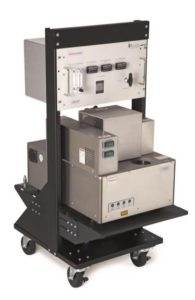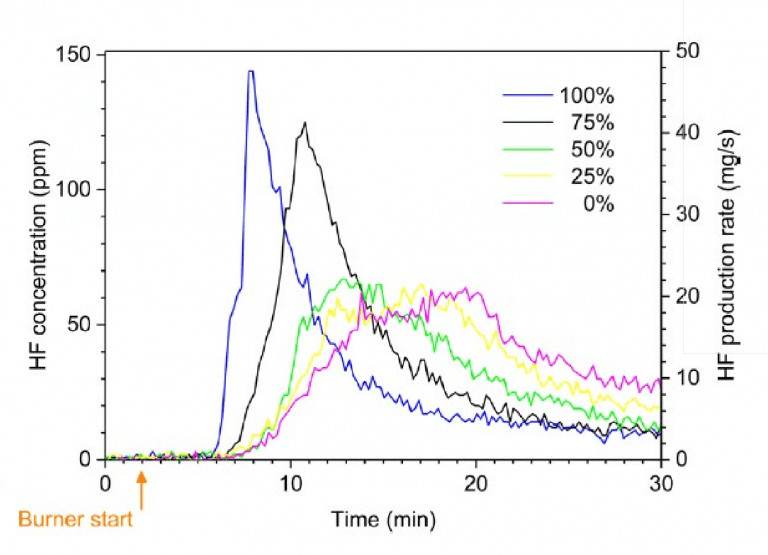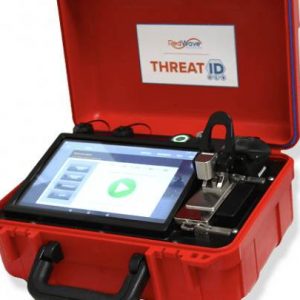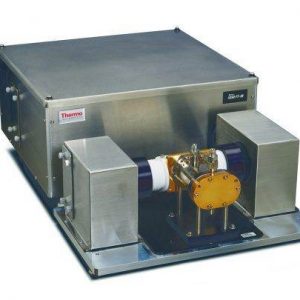Infrared spectroscopy for measuring smoke toxicity
- Application description
- FT-IR spectroscopy
 Fire science is a scientific field that sets safety standards and criteria for the composition of various materials in terms of their behavior in the event of a fire. It deals with the analysis of their mechanical and chemical properties under precisely defined conditions using special smoke chambers or conical calorimeters, in which the combustion parameters can be precisely controlled. One of the fundamental aspects of fire science is the study of thetoxicity of smoke, which arises during fires. Carbon monoxide (CO) emissions have traditionally been used as a key indicator, but other gaseous components of smoke are now being comprehensively monitored as well.
Fire science is a scientific field that sets safety standards and criteria for the composition of various materials in terms of their behavior in the event of a fire. It deals with the analysis of their mechanical and chemical properties under precisely defined conditions using special smoke chambers or conical calorimeters, in which the combustion parameters can be precisely controlled. One of the fundamental aspects of fire science is the study of thetoxicity of smoke, which arises during fires. Carbon monoxide (CO) emissions have traditionally been used as a key indicator, but other gaseous components of smoke are now being comprehensively monitored as well.
Infrared spectroscopy (FT-IR) is an ideal and modern online technique for gas analysis in the study of the combustion of various materials. New European regulations for railways and transport now directly require the testing of materials by FT-IR for their potential to produce various toxic or corrosive gases and particularly dangerous acids (HCl, HBr, HCN and HF) during combustion.
 Nicolet CZ offers a complete package of solutions for the FT-IR application, which meets the requirements of EN 45545-2 certification: FT-IR spectrometer Antaris IGSinstalled in a mobile stand (rack) together with an extension containing heated valves (HVD – heated valve drawer) and connections for gas supply/exhaust, including a complete software package for data measurement and analysis.
Nicolet CZ offers a complete package of solutions for the FT-IR application, which meets the requirements of EN 45545-2 certification: FT-IR spectrometer Antaris IGSinstalled in a mobile stand (rack) together with an extension containing heated valves (HVD – heated valve drawer) and connections for gas supply/exhaust, including a complete software package for data measurement and analysis.
The main advantages and functions of this solution include:
- High sensitivity when sampling many compounds in a single measurement
- Certified method of analysis validated according to primary calibration standards
- Direct online sampling for real-time analysis
- Ability to re-analyze stored data and add additional components for your own tests
The Antaris IGS system itself controls the constant flow of gas from the smoke chamber through the FT-IR gas cell. The probe is inserted into a “chimney”, where smoke samples are drawn through a heated soot filter and a transfer line using a diaphragm pump. The gas is kept at a constant temperature and pressure using a heated gas cell, in order to minimize measurement errors. The actual gas analysis takes place in a matter of seconds (measurement of individual spectra).
Another current and key application for fire science analysis is the study of lithium-ion batteries: monitoring of released chemicals after production (“off-gassing”), during a fire, electrical short circuit or other hazardous situations. These batteries generally use a lithium fluoride salt as an electrolyte (e.g. LiPF6). Similar electrolytes allow a very high electric charge density, but they can also release toxic hydrofluoric acid (HF) and other fluorinated compounds if they fall into non-standard conditions, such as mechanical damage in a car accident. The previous figure shows an FT-IR analysis of hydrofluoric acid gas released from burning batteries under different state of charge compared to heat release. FT-IR spectroscopy thus provides analysts with a better understanding of key parameters that are important for the release of this and other hazardous compounds, enabling more reliable technological development.
The described FT-IR system can also be used tocontrol the purity and composition of gases in gas cylinders and industrial tanks, e.g. control of the purity of oxygen and helium intended for medical purposes. The Antaris IGS FT-IR spectrometer with its unique solution is suitable for the analysis of toxic emissions during the combustion of many materials. This system complies with the new European regulations, which specify the parameters of the FT-IR analysis, if it is to be used to certify the properties of a material before it is placed on the market by determining the toxicity of smoke. The example of measuring the release of hydrofluoric acid during the combustion of lithium-ion batteries shows the usefulness of the FT-IR method for testing the safety of modern electric vehicles.


